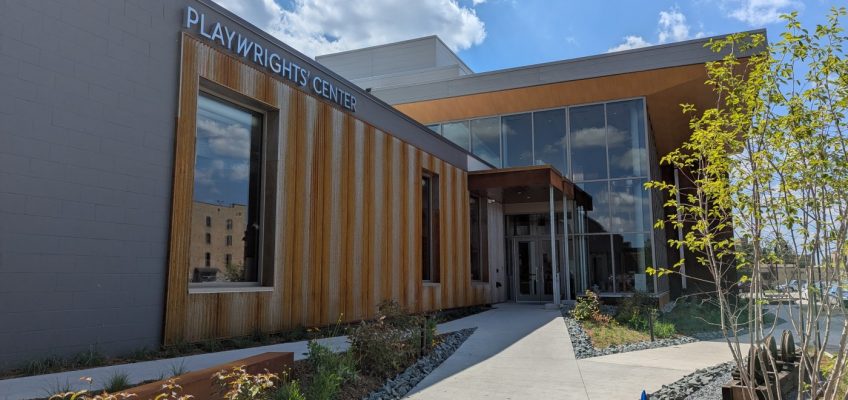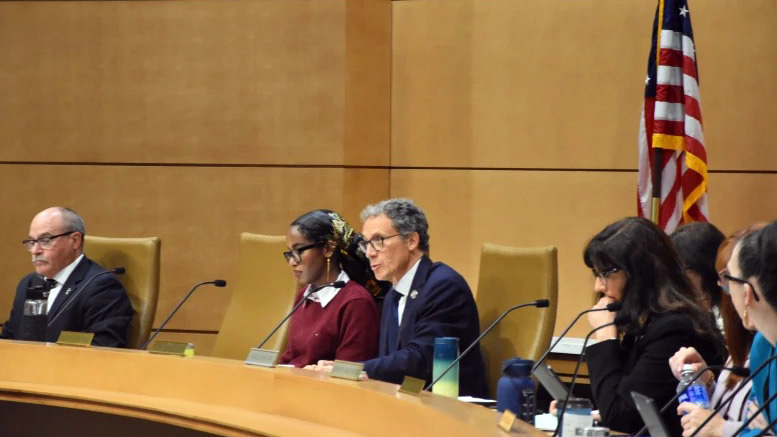After years of planning and construction, the nationally recognized Playwrights’ Center has officially moved to St. Paul’s Creative Enterprise Zone and is ready to open to the public this weekend.
The center, founded in 1971 and previously headquartered in a former Minneapolis church, provides significant economic and creative support for both emerging and established artists. Through a multimillion-dollar campaign launched in 2023, the organization transformed a century-old industrial building just off Raymond and University avenues into a bright, modern creative workspace, said executive director Robert Chelimsky.
“It’s quite something, seeing these rooms come to life,” he said.
A public celebration of the Playwrights’ Center’s new home (710 Raymond Ave.) begins at 11:30 a.m. Saturday, with remarks from the organization’s leaders and others; state Rep. Kaohly Her and City Council member Molly Coleman are scheduled to speak. Guided tours of the building will be offered throughout the afternoon, and new-play readings — it’s the Playwrights’ Center, after all! — will take place at 1:30 and 3:30 p.m. Food and drinks will also be available.
The center’s 2025–26 season officially begins in October with the PlayLabs Festival, showcasing new plays by JuCoby Johnson, Cristina Luzárraga and Yilong Liu. Tickets to shows (Oct. 24, 25, 26, 30, 31 and Nov. 1) are free and available at pwcenter.org/public-season.
The lobby of the Playwrights’ Center, now open in St. Paul’s Creative Enterprise Zone and shown in Sept. 2025, will be open to the public. (Courtesy of Playwrights’ Center)
In its previous Minneapolis building, Chelimsky said, the only time the Playwrights’ Center was able to open to the public was right before readings, when audience members could stand in the lobby. Now, with more than double the square footage, parts of the space will be open to the public more regularly, which Chelimsky hopes will contribute to a bustling sense of creative energy.
“There are different types of working spaces throughout the building, and it’s wonderful to see artists already using these spaces,” Chelimsky said. “And if people are just in the neighborhood and want a place to sit for a while or meet up with a friend, we’ve got space that they’ll be able to take advantage of, in the midst of this center with artists working on their craft.”
And the Playwrights’ Center is opening in the middle of a busy weekend in the Creative Enterprise Zone. Culminating on Saturday, the Chroma Zone mural festival is showcasing new works of large-scale wall art painted by artists throughout the summer. And on Sunday and Monday at nearby Dual Citizen Brewing, a Catalan-culture nonprofit is hosting a two-day celebration of traditional food and music from Catalonia. FilmNorth’s new hub for local filmmaking opened in the neighborhood earlier this summer, too.
“Being part of the creative and artistic energy of this neighborhood — it feels like such a vital time to be right here, and we’re so grateful to be able to be part of it,” Chelimsky said.
Related Articles
Ahead of upcoming 20th anniversary show, Ananya Dance Theatre is physically and morally powerful as ever
Fall arts and entertainment: New musicals include ‘Purple Rain’ and a Winter Carnival musical
Obituary: Steven Kent Lockwood, 79, turned Park Square Theatre into a St. Paul arts institution
Here’s the first look at the unknown actor playing Prince in the ‘Purple Rain’ musical
After spending decades as an actor, Reed Sigmund tries his hand at directing




